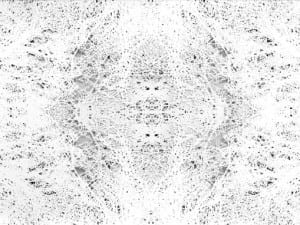Text by Sophie Caldecott
“We never get tired of looking at faces,” says Torben Åndahl, whose black and white photograph, Eike, is featured in this year’s Taylor Wessing Photographic Portrait Prize exhibition. Celebrating the fascination of the human face, the annual award has developed a prestigious international reputation since its inauguration in 2005.
The disagreement and debate that went on between the judges when narrowing over 6000 entries down to just 60 must have been heated, and something of that debate still lingers over their final choices. The portraits are diverse in tone and subject matter, and the photographers who have had their work featured range from young students and amateurs to established professionals. Jill Woodward, winner of the £12,000 First Prize, is a newcomer to the award, whereas Fifth Prize winner David Knight has been featured in the exhibition twice before. Michael Birt’s famous photograph of Keira Knightley for her role in The Children’s Hour is one of the only portraits featuring a celebrity in the exhibition; most of the subjects’ faces are unfamiliar to the viewer, leaving their expressions and body language to communicate their stories.
Eike is taken from Åndahl’s series called Those Left Behind, which explores the bereavement of the friends and family of suicide victims. Eike stands in her kitchen in Denmark, her arms hugging her body defensively and her expression desperately vulnerable and yet somehow strong and proud as she stares directly at the camera. The photograph was taken moments after she told Åndahl’s wife, a trained psychologist, the story of her father’s suicide. It is a stark emotional appeal, striking in its intensity. Åndahl sees the smile that most people automatically assume when a camera is pointed at them as a kind of mask, and works to build up a bond of trust with his subjects so that their raw emotions can be captured.
Rebecca Martinez’s Zoila With Freckles challenges us to rethink the automatic judgements we make about each other, simultaneously demanding a reaction from the viewer as well as urging empathy. It is with shock you realise that the baby cradled by the young woman with gentle brown eyes is not real. “So many of the women I photographed were reluctant to let people in, in case they were going to be judged,” says Martinez of her project, The PreTenders, photographing women with artificial babies.
The best portraits in the exhibition, indeed, are the ones that force the viewer to question their own responses. Mario Marino’s striking portrait of a Surma boy from Ethiopia staring straight out at the camera with a defensive frown has unsettling undertones of the colonial era, the Enlightenment obsession with labelling, defining and controlling other cultures. Marino felt that his project was “a race against time”, as the remaining pockets of traditional African culture started to disappear before his eyes.
The Embrace by Jonathan May portrays a moment of tenderness between two men, their naked skin covered in colourful patterned tattoos. They clearly see their bodies as living works of art, with the photographer noting that one of them intends to donate his skin to a museum after his death. The portrait embodies and presents both the alien and the familiar; the pair’s extraordinary skin and the mundanity of their activity. An emotionally stimulating selection of portraiture that engages the viewer with so many intensely intimate stories, it is almost a relief that the exhibition is not any larger in scale.
The question of how photography differs from other artistic media is also explored in portraits such as Julia Schestag‘s Maria With Child. Here, a weary mother holds her baby in a pose reminiscent of a Madonna and Child painting, with a golden disc on the wallpaper behind her head acting as a halo. There is something incredibly painterly about the translucence of her skin. In recalling the work of Leonardo Da Vinci and the old masters, Slater-Hunt highlights the responsibilities and sacrifices of parenthood. As with all of the portraits, however, something about the immediacy of photography makes the subject matter all the more poignant.
What made the winning entry stand out to the judges is indefinable and intriguing. The girl’s red hair that matches the coat of her guinea pig, the clinical white coat and bars of sunlight falling through the steel roof behind her? Her shy, adolescent unease? The five prize-winning entries are not given a particular emphasis in the arrangement of the exhibition, which seems appropriate given its message about the subjectivity of preference.
The Taylor Wessing Photographic Portrait Prize continues at the National Portrait Gallery, London, until 12 February 2012.
Aesthetica Magazine
We hope you enjoy reading the Aesthetica Blog, if you want to explore more of the best in contemporary art and culture you should read us in print too. You can buy it today by calling +44(0)1904 479 168. Even better, subscribe to Aesthetica and save 20%. Go on, enjoy!
Image:
Christina and Mark, 14 months (2011
Dona Schwartz © Dona Schwartz




